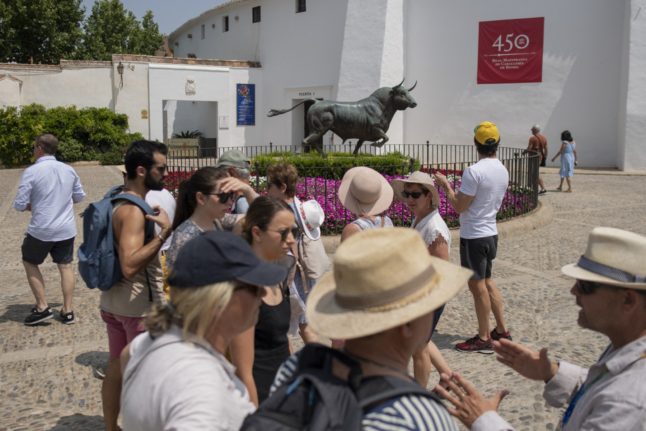The fourth day of farming protests has kicked off in Spain, with some of the country’s major agricultural associations joining the movement again on Friday.
After a day in which protesters converged on Barcelona, they were out again on Thursday with several columns of slow-moving tractors snarling traffic on roads in the eastern Valencia region, Asturias in the north and the central region of Castilla-La Mancha, and several other regions.
Some protests have led to scuffles with Spanish police when they attempted to remove the roadblocks.
According to Spain’s interior ministry, 19 people have been arrested since the start of the protests.
READ ALSO:
In Ciudad Real, local media said hundreds of protesters dumped 25,000 litres of French wine into the street in front of the local water authority in protest at the central government’s policies on water.
Angry farmers have been protesting across Europe over rising costs, high fuel prices, bureaucracy and the environmental requirements in the EU’s Common Agricultural Policy (CAP) and its forthcoming “Green Deal”.
In response to the protest, Spanish Prime Minister Pedro Sánchez has promised to simplify the rules for implementing the CAP, as well as changing the laws so farmers don’t have to sell their products at a loss.
The following map gives you a better idea of the farmers’ roadblocks taking place across Spain on Friday February 9th:
So far, at 10am on Friday February 9th, farmers’ protests are taking place or scheduled to happen throughout the day in the following places:
- Seville: blockade in both directions on the A-92 around Osuna
- La Rioja: farmers blocking the N-232 in both directions around la Aldeanueva del Ebro
- Badajoz: numerous blockades on the A-5, N-523, EX-103, N-430 and the N-435
- Teruel: blockade on the N-420, the N-232
- Cáceres. blockade on the EX-109 around Moraleja
- Toledo: blockade on the N-301
- Castellón: farmers in Corral de Almaguer are completely blocking the N-340
- Valencia: two tractoradas on the V-31 around Albal and on the CV-374 around Ventas del Poyo
- Huesca: tractors are blocking the N-330 around Almudevar and the N-240 around Sietamo
- Zaragoza: at least 4 blockades on the N-330, the A-2, the N-122 and the N-232
- Cuenca: A-3 is completely blocked around Castillo de Garcimuñoz
- Málaga: the A-7278 is blocked in both directions around Teba
- Albacete. The N-430 is blocked around Villarrobledo
- Navarre: Tractors are blocking the N-121 around Valtierra
For live updates, this map by the DGT will also help. The icons showing people are where the protests are happening.



 Please whitelist us to continue reading.
Please whitelist us to continue reading.
Member comments